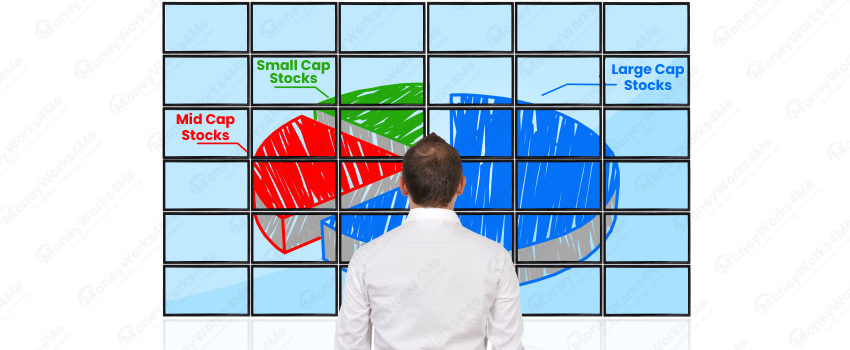Rising interest rates and fears of equity market correction has made people search at alternatives to park their money. Debt/Bond/Fixed Income assets are one place where investors can park their funds, to gain an advantage of higher interest rates with regular income currently.
What are Debt Funds?
Debt funds are mutual funds that invest in securities that generate fixed income like treasury bills, corporate bonds, commercial papers, government securities, and money market instruments. These securities have a pre-specified timeline, returns, and cashflows. These debt funds allow investors to gain exposure to fixed-income assets based on maturity (time), interest, and borrowers with different credit ratings.
While selecting a debt fund one needs to look at the –
- Maturity – Time till securities mature (this is when you will get your funds back), one should select maturity based on the time one intends to park these funds, from overnight to long term (more than 10 years).
- Expense Ratio – Similar to equity MF, debt funds charge an expense ratio for purchasing, researching and handling these securities. Generally, the expense ratio is less than 1%.
- Yields – Investors have the option to invest in funds generating various yields (low to high). These yields depend on time to mature as well as the credit rating/quality of borrowers whose securities these funds invest in. Generally, higher yields are associated with riskier borrowers, while they also increase as time to mature rises (except in an inverted yield curve scenario).
Risks related to Debt Funds/Fixed Income assets?
- Credit Risk – These securities carry credit risk related to the issuer, if the issuer of securities (borrower) defaults, is unable to make a payment, or goes bankrupt.
- Liquidity Risk – Fixed Income securities are generally less liquid, hence selling these assets puts strain on liquidity. Although Debt funds solve this issue, a sudden large outflow could cause fund providers to flash sell these securities, generating losses.
- Interest Rate Risk is a risk that changing interest rates will have an effect on the value of the securities, this affects the capital gain part of returns.
Types of debt funds
- Overnight Funds – invest in 1-day maturity papers (securities)
- Liquid Funds – invest in money market instruments maturing within 90 days Floating Rate Funds – invest in floating rate debt securities
- Ultra-Short Duration Funds – invest in debt securities maturing in 3-6 months
- Low Duration Fund – invest in securities maturing within 6-12 months
- Money Market Funds – invest in money market instruments with a maturity of up to 1 year
- Short Duration Funds – invest in securities with 1-3 years of maturity
- Medium Duration Funds – invest in debt securities with 3-4 years of maturity
- Medium-to-Long Duration Funds – invest in debt securities with 4-7 years of maturity
- Long-Duration Funds – invest in long-maturity debt (over 7 years)
- Corporate Bond Funds– which invests a minimum of 80% of its investible corpus in corporate bonds
- Banking & PSU Funds – which invests a minimum of 80% of its investible corpus in debts of banks, PSUs, PFIs
- Gilt Funds – which invests a minimum of 80% of its investible corpus in Government bonds of varying maturities
- Gilt Fund with 10-year Constant Duration – invest in G-securities with a 10-year maturity
- Dynamic Funds – invest in Debt Funds securities across maturities Credit Risk Funds – invest in corporate bonds below the highest ratings
- Floater Fund – invests a minimum of 65% of its investible corpus in floating rate instruments. These funds carry a low interest-rate risk.
Returns on Debt funds?
Returns on debt funds, Yield to Maturity (YTM) comprise of two parts – Coupon (interest income) one receives on the face value of these assets and capital appreciation/depreciation on them.
Tax implications on debt funds?
If the units of funds are held for less than 3 years, then gains are calculated as STCG (Short Term Capital Gain) and are taxed as per an individual’s tax slab. In contrast, if they are held for more than 3 years then the gains will be calculated as LTCG (Long Term Capital Gain) and will be taxed at 20% with the benefit of indexation.
It makes sense for one to invest excess funds into debt funds to earn that excess return over a bank account. One can park money into these funds based on time, risk (risk-free government securities to risky corporate debt) as well yield curve play, where one could invest to gain from interest rate changes.
Quick Access Links:
Best Mutual Funds Best Tax Saver Funds Flexicap Funds SIP Calculator Compare Mutual Funds
Need help on Investing? And more….Puchho Befikar
Why MoneyWorks4me | Call: 020 6725 8333 | Ebook | WhatsApp: 9860359463











